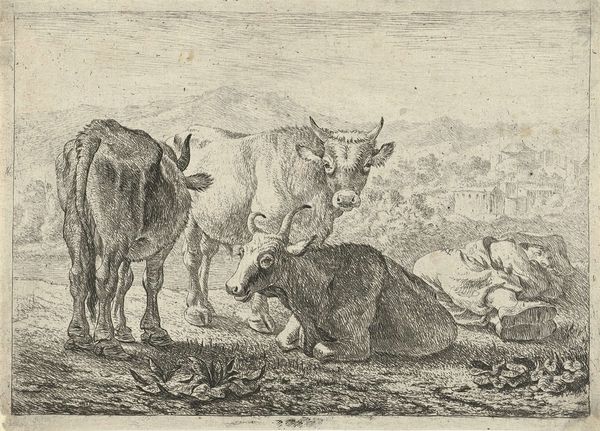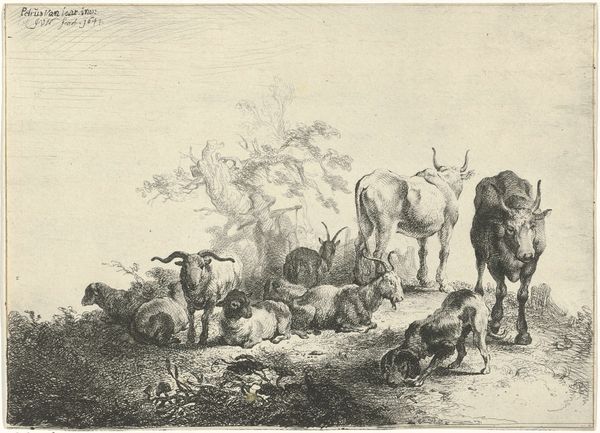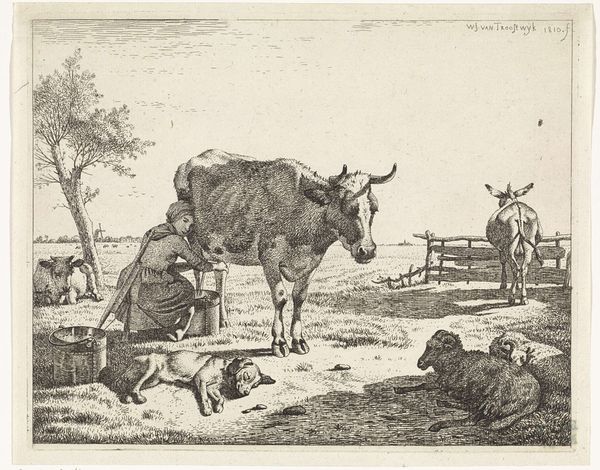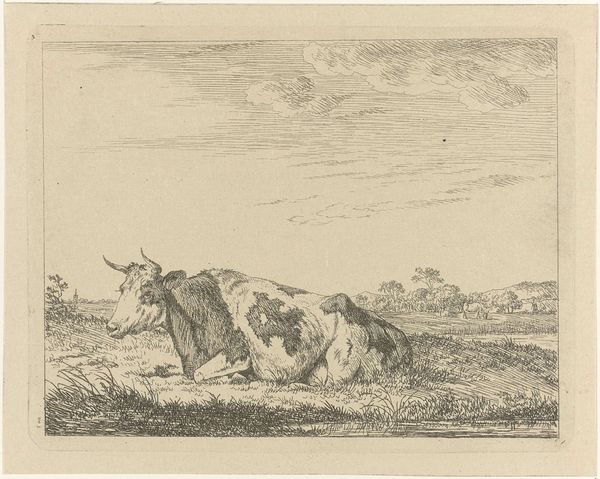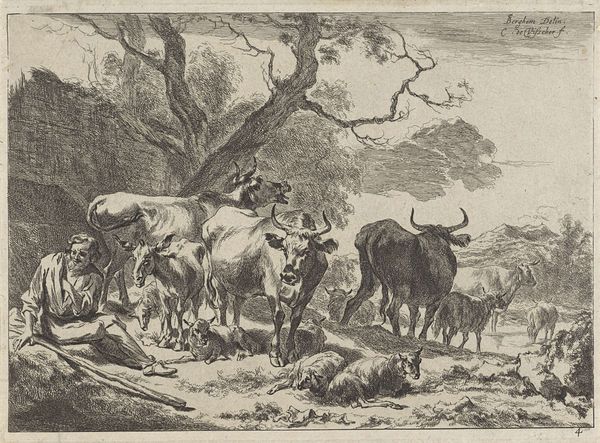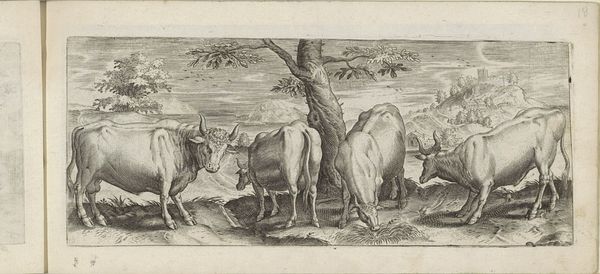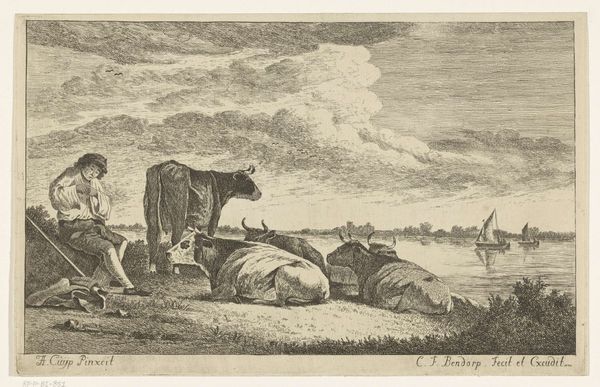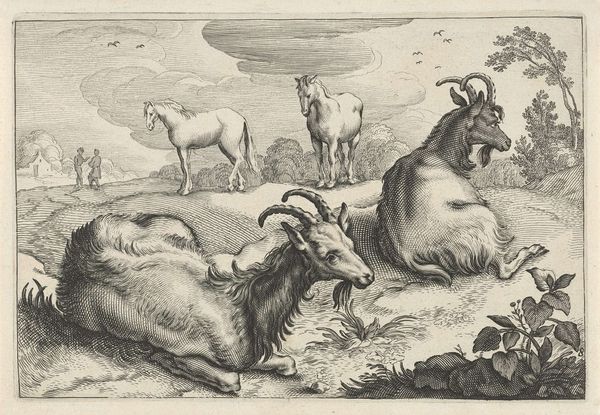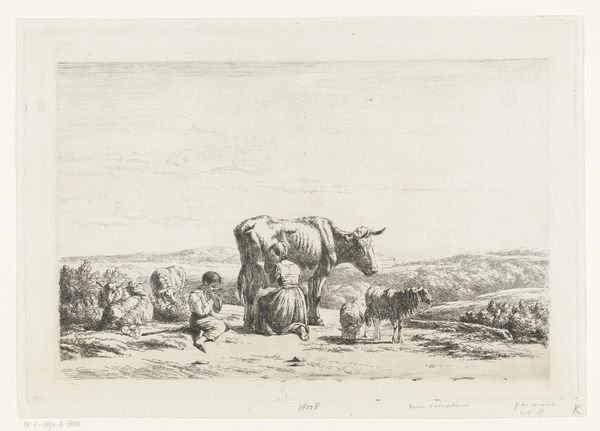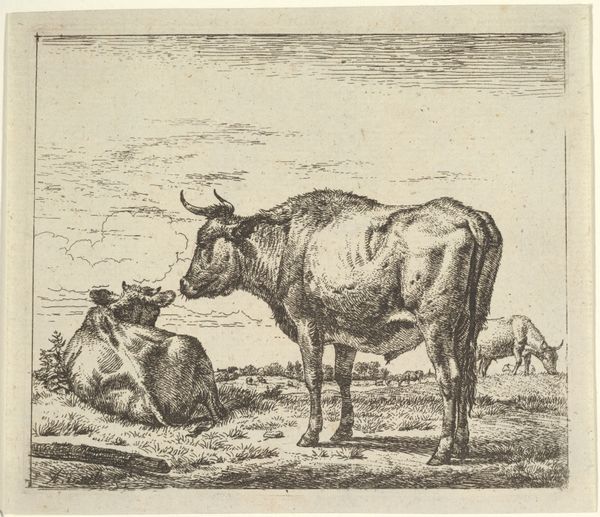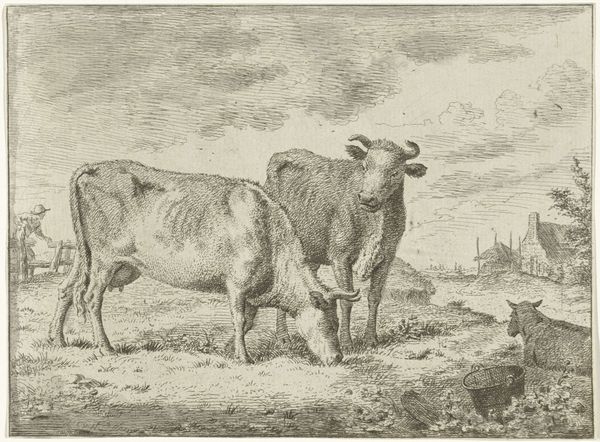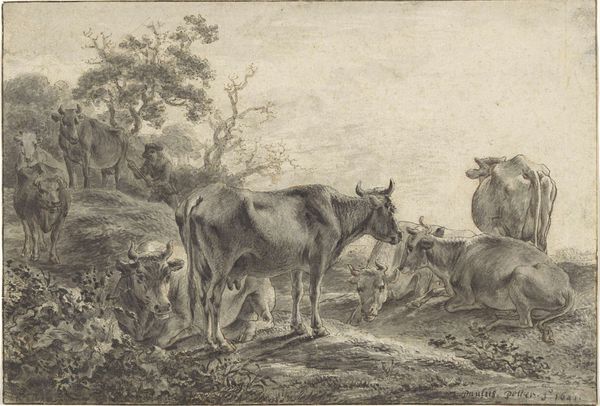
print, etching
#
baroque
#
animal
# print
#
etching
#
landscape
#
genre-painting
Dimensions: height 198 mm, width 260 mm
Copyright: Rijks Museum: Open Domain
Editor: This is Gerrit Lucasz van Schagen's "Herder met geiten, schapen en koeien," an etching dating from somewhere between 1656 and 1690. It’s interesting how he groups the animals; it almost feels staged, like a portrait. What do you see in this piece? Curator: Well, on the surface, it's a genre scene, typical of the Dutch Golden Age. But consider the context: land ownership, wealth disparity, and the romanticization of rural life were hot topics. How might this seemingly idyllic image play into those narratives? Editor: I guess the herder is like a symbol of simple living, even if the reality was likely much harder. The animals look so peaceful. Curator: Precisely! And who benefits from this peace and pastoral abundance? Is it the herder, or is it the landowner who profits from the livestock? Think about the power dynamics at play. What does this idealization obscure about the realities of labor and class? Editor: So it's not just a pretty picture; it’s saying something about society at the time. Were there many artists doing similar work? Curator: Plenty! It was a popular trope. But examining them collectively, we start to see patterns – deliberate choices about what to show, and more importantly, what to leave out. It's about unpacking those silences, asking who gets to be seen, and on whose terms. Editor: It definitely makes me think about landscape art differently. I always took these scenes at face value. Curator: Art rarely exists in a vacuum. By considering the social and historical context, we can unearth so much more. I'm glad we could bring some awareness to van Schagen’s work today!
Comments
No comments
Be the first to comment and join the conversation on the ultimate creative platform.
